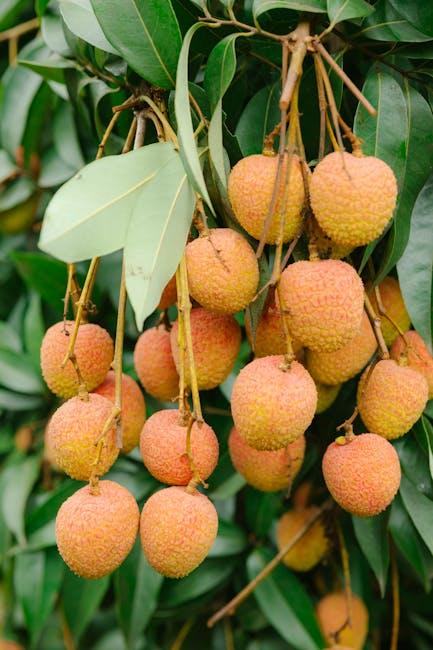Table of Contents
- Understanding the Concept of Food Exchange and Its Benefits
- Exploring Different Types of Food Exchange Programs
- Tips for Successfully Participating in Food Exchange Initiatives
- Navigating Dietary Preferences in Food Swap Events
- Building Community Connections Through Food Exchange Activities
- Q&A
- Wrapping Up


Understanding the Concept of Food Exchange and Its Benefits
The concept of food exchange revolves around the idea of swapping certain quantities of foods from different groups while maintaining balanced nutrition. This method is invaluable for people managing dietary conditions such as diabetes or those simply looking to maintain a healthy lifestyle. By understanding how various foods can be interchanged, individuals can create flexible meal plans without sacrificing essential nutrients. The foundation of food exchange is category-based, often dividing food into several groups such as carbohydrates, proteins, fats, and vegetables.
One of the primary benefits of implementing a food exchange system is the enhanced freedom it offers in meal planning. Instead of rigidly sticking to a fixed menu, individuals can enjoy a variety of foods while still meeting their dietary goals. For example, a person who prefers rice can swap it out for whole grain bread without feeling guilty. This not only keeps meals exciting but also encourages experimentation with new recipes. Some common exchanges include:
- 1 cup of cooked pasta = 1 cup of cooked quinoa
- 1 medium apple = 1 medium banana
- 3 ounces of chicken = 3 ounces of tofu
Another notable advantage of the food exchange method is its educational component. By learning about food groups and their equivalents, individuals become more mindful eaters, understanding the importance of portion sizes and nutrient density. To illustrate, consider the following table that outlines simple food exchanges across different categories:
| Food Group | Food Item | Exchange Amount |
|---|---|---|
| Carbohydrates | Brown Rice | 1/2 cup (cooked) |
| Protein | Lean Beef | 3 ounces |
| Fruits | orange | 1 medium (about 130g) |
| Vegetables | Steamed Broccoli | 1 cup (cooked) |
mastering the food exchange system can lead to better dietary choices, foster creativity in the kitchen, and instill a deeper appreciation for nutrition. With a bit of knowledge and practice, anyone can learn to navigate the exchanges effectively, making healthier eating a sustainable and enjoyable journey.


Exploring Different Types of Food Exchange Programs
Food exchange programs come in various forms, each offering a unique way for participants to discover new cuisines, share cultural traditions, and foster community bonds. One popular type is the community potluck, where individuals bring homemade dishes to share. This informal gathering not only allows for a delightful array of flavors but also promotes conversation and camaraderie among neighbors. Participants often take home new recipes and insights into different culinary practices, heightening their appreciation for diverse food cultures.
Another intriguing option is the farm-to-table exchange, which connects local farmers with consumers looking for fresh, organic produce. In this model, participants can sign up to receive regular deliveries of seasonal fruits and vegetables, often along with recipes that highlight these ingredients. This system not only supports local agriculture but also encourages individuals to explore new cooking techniques and flavors. As a result, families grow accustomed to a diet rich in diversity and sustainability.
Lastly, we have international food exchanges, where individuals or families swap meals from their home countries. This type prominently features culinary storytelling, as participants share the background and significance of the dishes exchanged. Such interactions go beyond simply trading food; they provide insights into different cultural practices and values tied to diverse cuisines. For example, an exchange might involve a delicious Thai green curry alongside homemade Italian pasta, each dish paving the way for deeper conversations about heritage and tradition.


Tips for Successfully Participating in Food Exchange Initiatives
Participating in food exchange initiatives can be a rewarding experience that fosters community connections and encourages sustainable practices. To make the most of this collaborative effort, ensure you are prepared by following a few essential guidelines. Start by understanding what items are permitted for exchange. Research or inquire about any specific rules regarding food safety, packaging, and seasonal availability. This will not only keep participants safe but also enhance the overall success of the exchange.
Another key factor in successful food exchanges is communication. Engage with fellow participants to share details about your offerings and preferences. Utilize social media groups or community boards to announce what you plan to bring and to see what others may have. Be open to suggestions and adapt your plans based on collective needs. This dialogue helps to build a sense of camaraderie among participants and ensures that everyone leaves the exchange satisfied.
Consider making a simple plan for the day of the exchange. Here is a structured approach you might follow:
| Time | Activity | Notes |
|---|---|---|
| 8:00 AM | Set Up | Arrive early to arrange your items. |
| 9:00 AM | Start Exchange | Follow the agreed schedule. |
| 11:00 AM | Wrap Up | Gather leftovers and evaluate the event. |
be sure to bring bags or containers to safely carry your items back home. Participation in food exchanges not only enriches your pantry but also helps reduce food waste. Embrace the joy of sharing and exchanging, and you’re likely to build lasting connections while enjoying a variety of delicious and diverse food options.


Navigating Dietary Preferences in Food Swap Events
Embracing diverse dietary preferences can transform food swap events into inclusive experiences that celebrate variety and community. To successfully navigate the myriad of dietary restrictions and preferences, it’s crucial to establish clear guidelines before the event. For instance, consider creating a detailed food label system that includes information on dietary restrictions such as:
- Vegetarian
- Vegan
- Gluten-Free
- Nut-Free
- Dairy-Free
Encouraging participants to label their dishes will help everyone know exactly what they’re consuming, enhancing the overall enjoyment of the event. Additionally, it’s beneficial to provide a designated area for different types of dietary categories, ensuring that everyone can easily find options that suit their needs. A simple table can be useful for organizing food offerings by dietary preference:
| Dietary Preference | Suggested Foods |
|---|---|
| Vegetarian | Stuffed Peppers, Veggie Wraps |
| Vegan | Chickpea Salad, Fruit Skewers |
| Gluten-Free | Quinoa Salad, Rice Cakes |
| Nut-Free | Cucumber Sandwiches, Popcorn |
Creating a friendly atmosphere where dietary preferences are respected encourages open dialogue and fosters connections among participants. Encourage attendees to share their dietary journeys and any cooking or preparation tips. This not only enhances the community spirit but also empowers individuals to explore foods they might not have considered before. Ultimately, by focusing on inclusivity and collaboration, food swap events can nurture a richer culinary tapestry that reflects the diverse backgrounds and tastes of all involved.


Building Community Connections Through Food Exchange Activities
Food exchange activities transcend mere sharing; they forge lasting bonds within our communities. In a world that often feels disconnected, these gatherings encourage neighbors to come together and partake in a unique culinary adventure. Participants not only bring their home-cooked dishes or freshly baked goods but also their stories, cultures, and memories, creating a rich tapestry of flavors and experiences. Through these exchanges, individuals can discover new recipes and ingredients while also sparking conversations that build understanding and connection among diverse backgrounds.
The beauty of food exchange lies in its inclusivity and accessibility. Typically organized in local parks, community centers, or even backyards, these events invite everyone regardless of cooking skills or experience. Simple guidelines make participation easy, such as:
- Bring one dish to share with the group, ideally something that represents your culture or family tradition.
- Label all dishes with ingredients and any potential allergens to ensure everyone can partake safely.
- Encourage contributions of utensils or serving dishes, fostering a sense of cooperation.
Moreover, these gatherings can shine a spotlight on local farmers and artisans, creating an avenue for supporting local economies. Consider organizing themed exchanges, like seasonal harvests or holiday feasts, where community members can showcase seasonal produce or traditional recipes. Here is a simple overview of potential themes:
| Theme | Description |
|---|---|
| Harvest Festival | Focuses on dishes featuring local bounty, like squash, apples, and root vegetables. |
| Cultural Heritage Night | Encourages sharing recipes that reflect cultural backgrounds, fostering understanding. |
| Healthy Eating Day | Promotes nutritious dishes, emphasizing whole foods and healthy recipes. |
Through these food exchange activities, communities cultivate connections that go beyond just sharing a meal, creating a platform for learning, celebrating diversity, and building a network of support that nourishes both body and soul.
Q&A
Q&A: Understanding Food ExchangeQ1: What is food exchange? A1: Food exchange refers to the practice of trading food items rather than money. This can occur between individuals, groups, or communities, often to promote sustainable eating habits, minimize waste, or increase food accessibility. It’s not just about swapping apples for oranges; it embraces cultural diversity, strengthens community bonds, and fosters a sense of sharing.Q2: Why is food exchange important? A2: Food exchange plays a crucial role in promoting sustainability. It reduces food waste by ensuring that extra items find a new home rather than being thrown away. Additionally, it enhances food security for participants who may not have access to certain types of food, allowing communities to share their resources. On a larger scale, food exchange can also contribute to local economies and encourage healthier eating habits by introducing a variety of foods.Q3: How can I participate in a food exchange? A3: Participating in a food exchange is quite simple! Start by connecting with neighbors or local community groups interested in trading food. You can organize a food swap event, where participants bring surplus items to share. Alternatively, consider joining online platforms dedicated to local food exchanges. Just ensure the items you bring are fresh, clearly labeled, and safe for consumption.Q4: What types of food can be exchanged? A4: Almost any food item can be exchanged! Common choices include fruits, vegetables, baked goods, preserves, herbs, and even homemade meals. Just be mindful of local food safety regulations and the preferences of those participating in the exchange. It’s a great opportunity to share unique recipes and discover foods from different cultures.Q5: Are there any guidelines for successful food exchanges? A5: Yes! Here are a few tips to ensure a smooth exchange:- Communicate Clearly: Share what you plan to bring and any dietary restrictions.
- Quality Matters: Only exchange foods that are fresh and in good condition.
- Be Inclusive: Encourage a variety of food items to cater to different tastes and dietary needs.
- Respect Hygiene: Wash hands and surfaces before handling food, and consider packaging food securely.
- Have Fun: Make the experience enjoyable! Share recipes, stories, and maybe even enjoy a meal together.




0 Comments